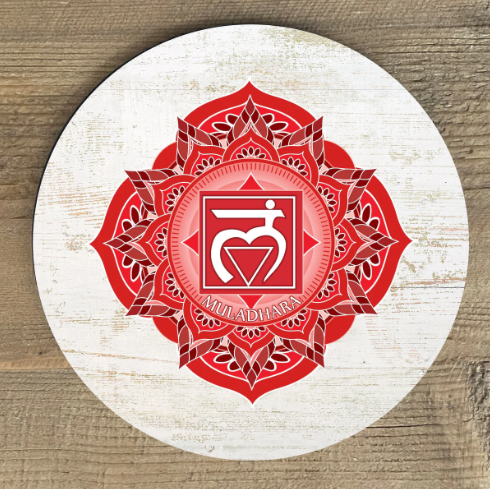The root chakra, also known as Muladhara in Sanskrit, is the first of the seven chakras and is located at the base of the spine. The word Muladhara is a combination of two words: Mula, which means root, and Adhara, which means support or base. The root chakra is associated with our basic survival needs, such as food, shelter, and safety, and is responsible for providing us with a sense of stability, grounding, and foundation.
Physical Location and Symbolism
The root chakra is located at the base of the spine, near the coccyx bone, and is associated with the color red. The symbol of the root chakra is a lotus flower with four petals, which represents the four aspects of the chakra: earth, water, fire, and air. The lotus flower is a symbol of purity and enlightenment, and its four petals represent the four states of consciousness: waking, dreaming, deep sleep, and transcendental consciousness.
Functions and Characteristics
The root chakra is responsible for providing us with a sense of grounding, stability, and security. It is the foundation of our physical body, and when it is balanced, we feel connected to the earth and have a strong sense of physicality. The root chakra is also associated with our primal instincts, including our survival instincts, and is responsible for keeping us safe and protected.
The energy of the root chakra is often described as heavy, dense, and grounding, and it is associated with the element of earth. It governs our relationship with the physical world, including our connection to our body, our sense of belonging, and our relationship with our environment. The root chakra is also associated with the sense of smell, which is often used as a tool for grounding and centering oneself.
Imbalances and Healing
When the root chakra is imbalanced, it can manifest in various physical, emotional, and mental symptoms. Physical symptoms can include lower back pain, digestive issues, and immune system problems. Emotional symptoms can include anxiety, fear, and insecurity, while mental symptoms can include difficulty focusing, lack of motivation, and disconnection from the physical world.
To heal the root chakra, it is important to focus on grounding and stabilizing practices, such as yoga, meditation, and mindfulness. These practices can help to increase our sense of security and connectedness to the physical world. Other techniques for healing the root chakra include working with crystals, such as red jasper or hematite, which are believed to have grounding properties, and incorporating grounding foods into our diet, such as root vegetables and protein-rich foods.
Conclusion
The root chakra is a vital energy center that is responsible for providing us with a sense of grounding, stability, and foundation. When this chakra is balanced, we feel connected to the earth and have a strong sense of physicality, while imbalances can lead to a range of physical, emotional, and mental symptoms. By focusing on grounding and stabilizing practices, we can heal the root chakra and achieve a sense of balance and harmony in our lives.
What is the Root Chakra and How Does it Work?

